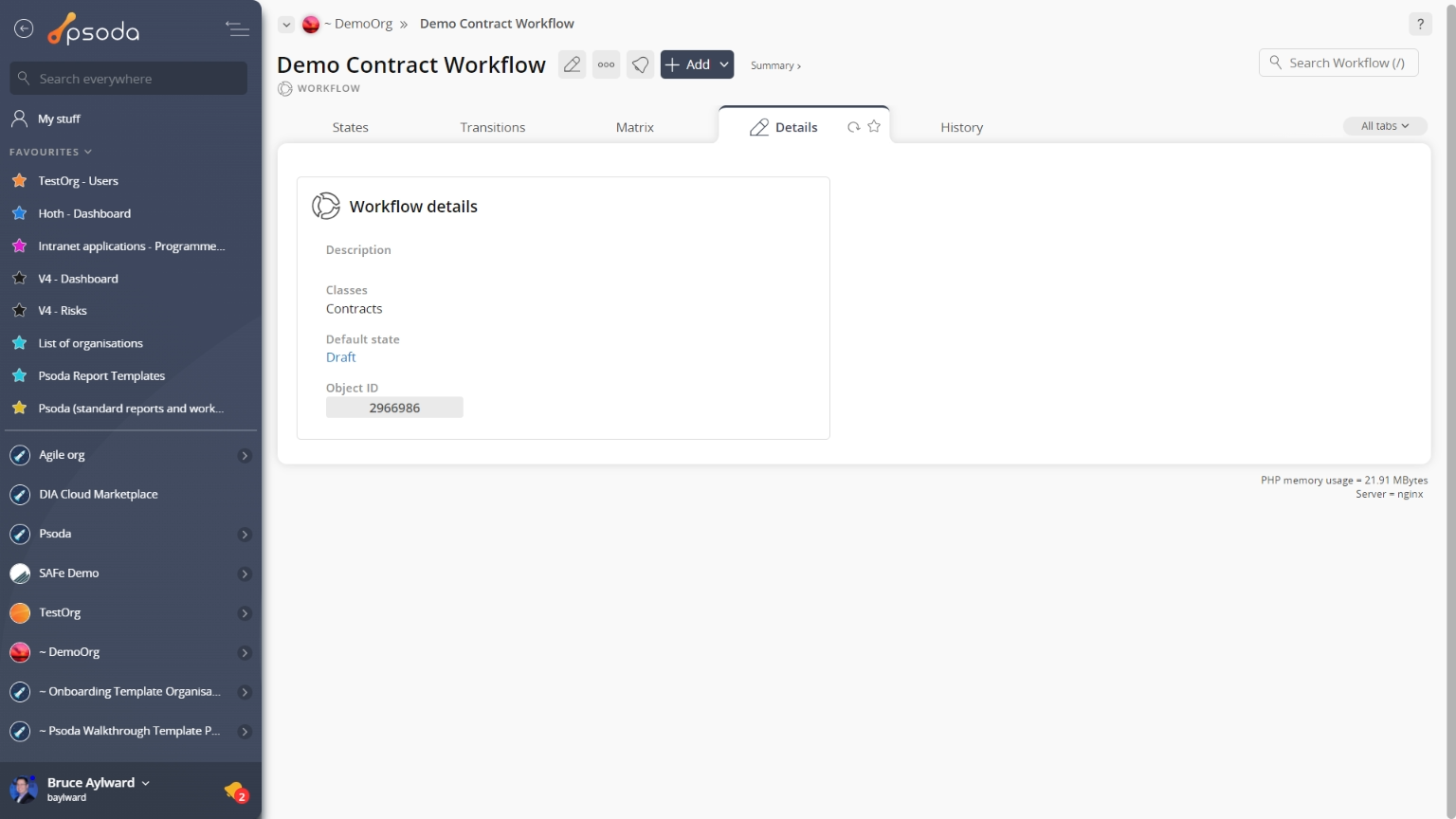
Figure 1 – Workflow view page
Depending on your access rights the top header area allows you to Assets
Assets
This tab shows an asset listing of all of the assets that this workflow has been applied to, as shown in Figure 2. By default, this table will present you with a number of details about the assets such as the type, name, current state, parent and if it requires authorisation, if any transition has been requested and if so which user requested this transition. If you click on the link beneath the name column, you will navigate into that asset’s view page.
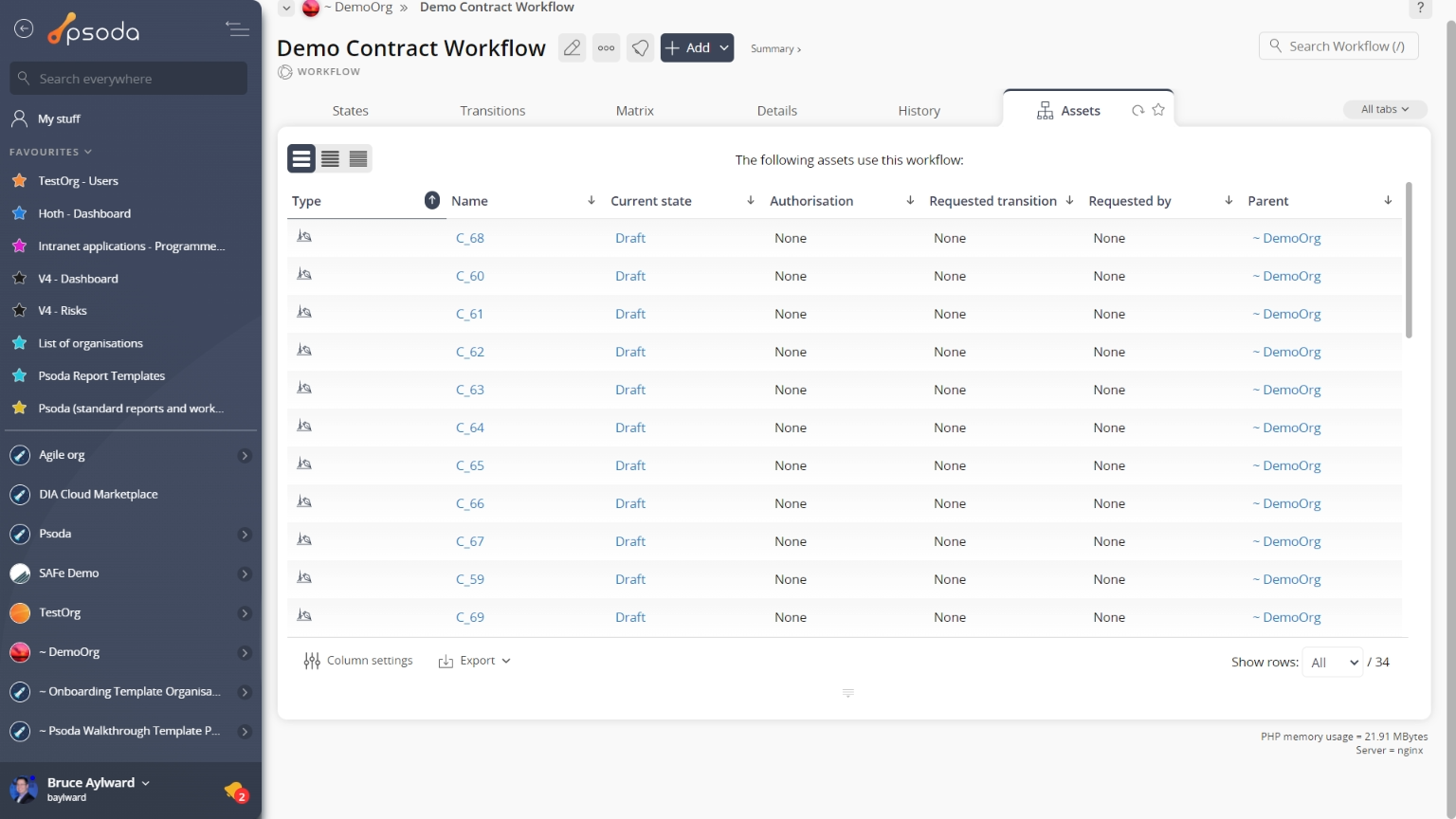
Figure 2 – Workflow assets tab
Note that you can customise your table view by clicking the Attachments
Attachments
This tab shows an asset listing of all of the attachments that have been added to this workflow, as shown in Figure 3. By default, this table will present you with a number of details about the attachments such as the file’s name, attachment type, view the version and access a download link.
From the Actions column of this attachments table, you can act on individual attachments by 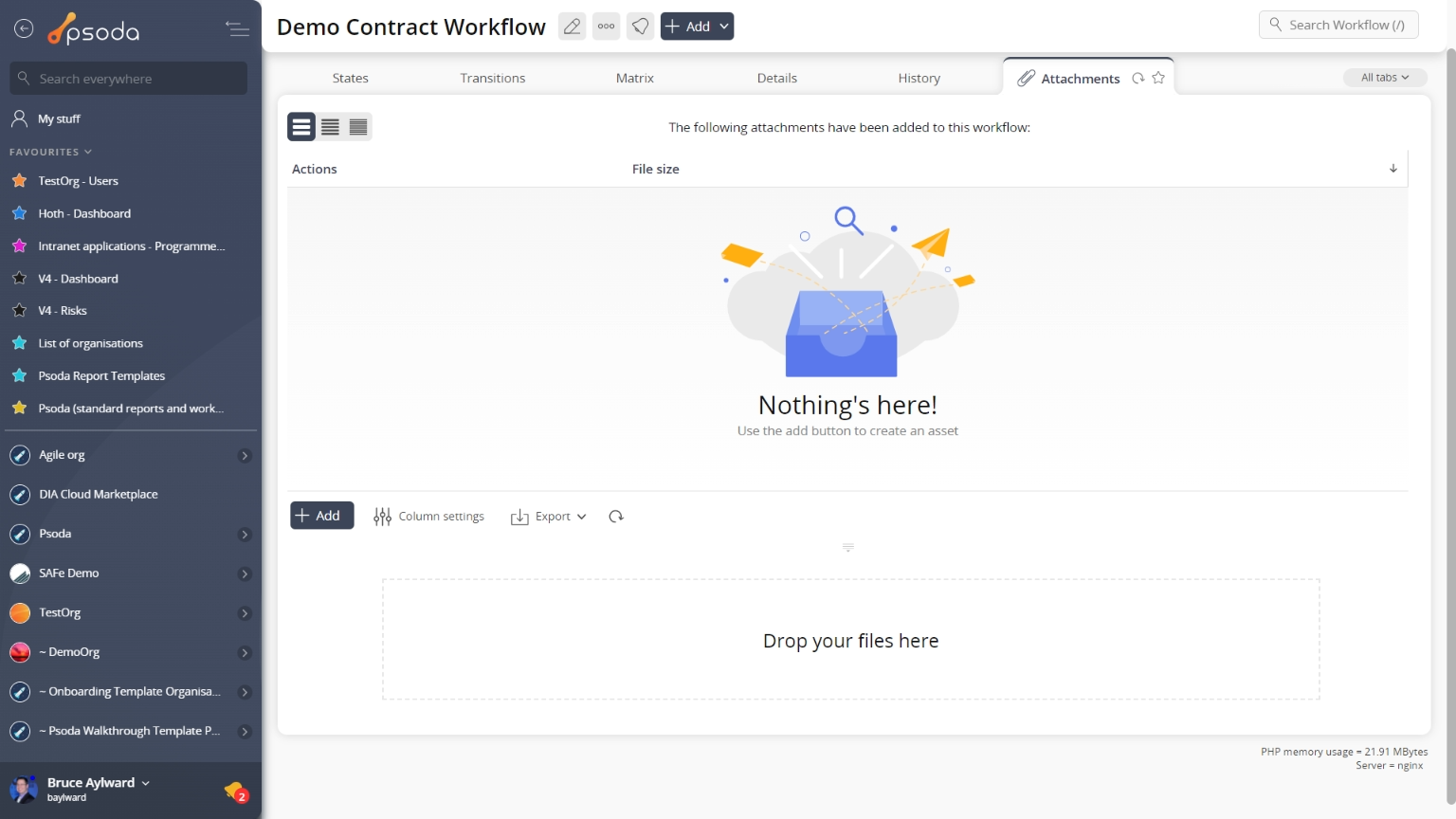
Figure 3 – Workflow attachments tab
Note that you can customise your table view by clicking the Comments
Comments
This tab shows an asset listing of all of the comments that 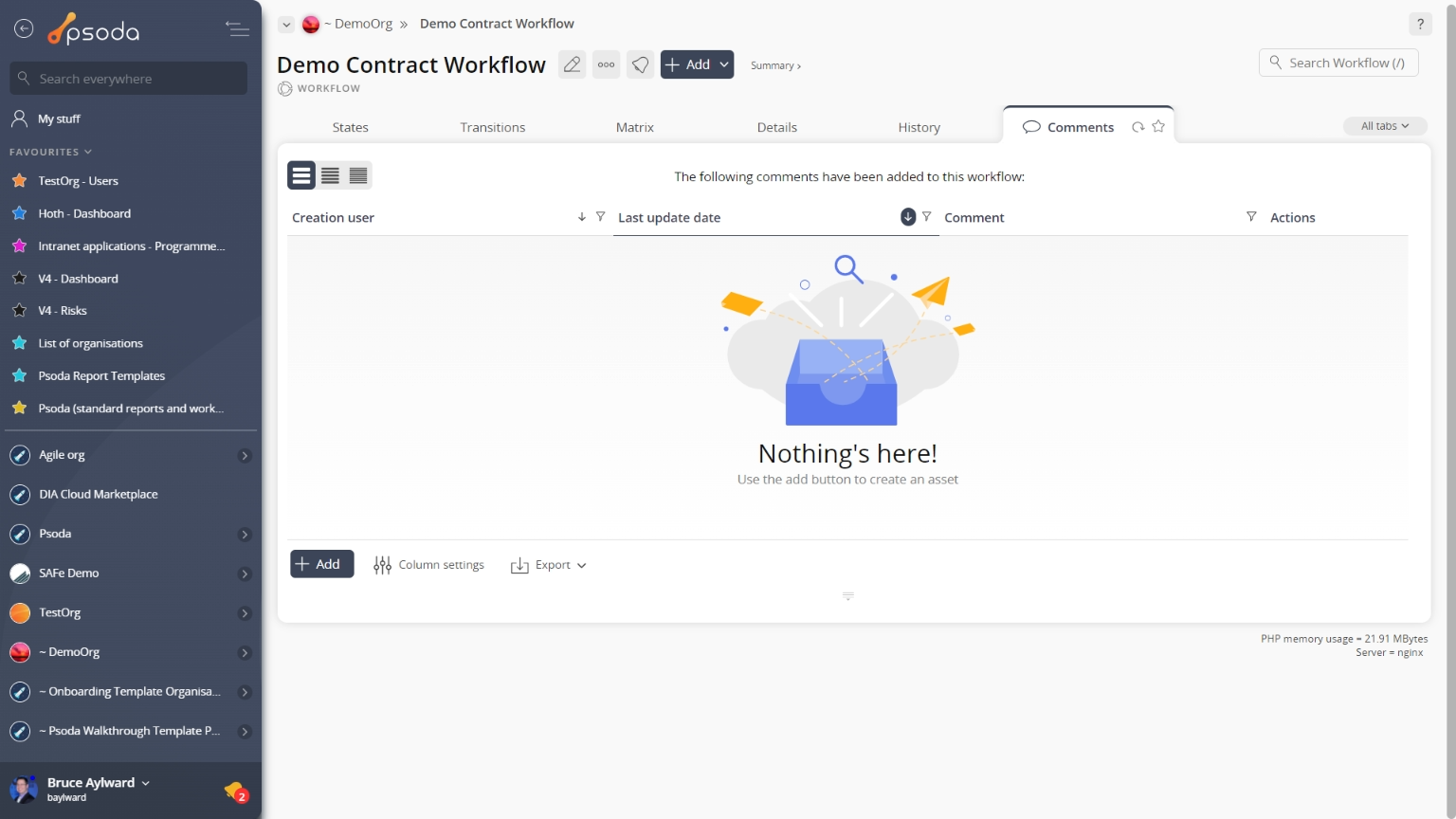
Figure 4 – Workflow comments tab
Note that you can customise your table view by clicking the Details
Details
This tab shows the description for the selected workflow, as seen in Figure 5.

Figure 5 – Workflow details tab
This field may allow for inline editing although these permissions may be linked to your access rights. If you feel that you should have access to some of these permissions, contact your System Administrator.
 History
History
This tab shows shows some basic history of the workflow, as shown in Figure 6. By default, this tab will present you with a number of details about the workflow’s history such as the creation date, creation user, last update date and last update user. If the workflow has been changed then this section will also show a table of all the changes that has been made, including the date of each change, the field changed, the value before the change and the user who made the change.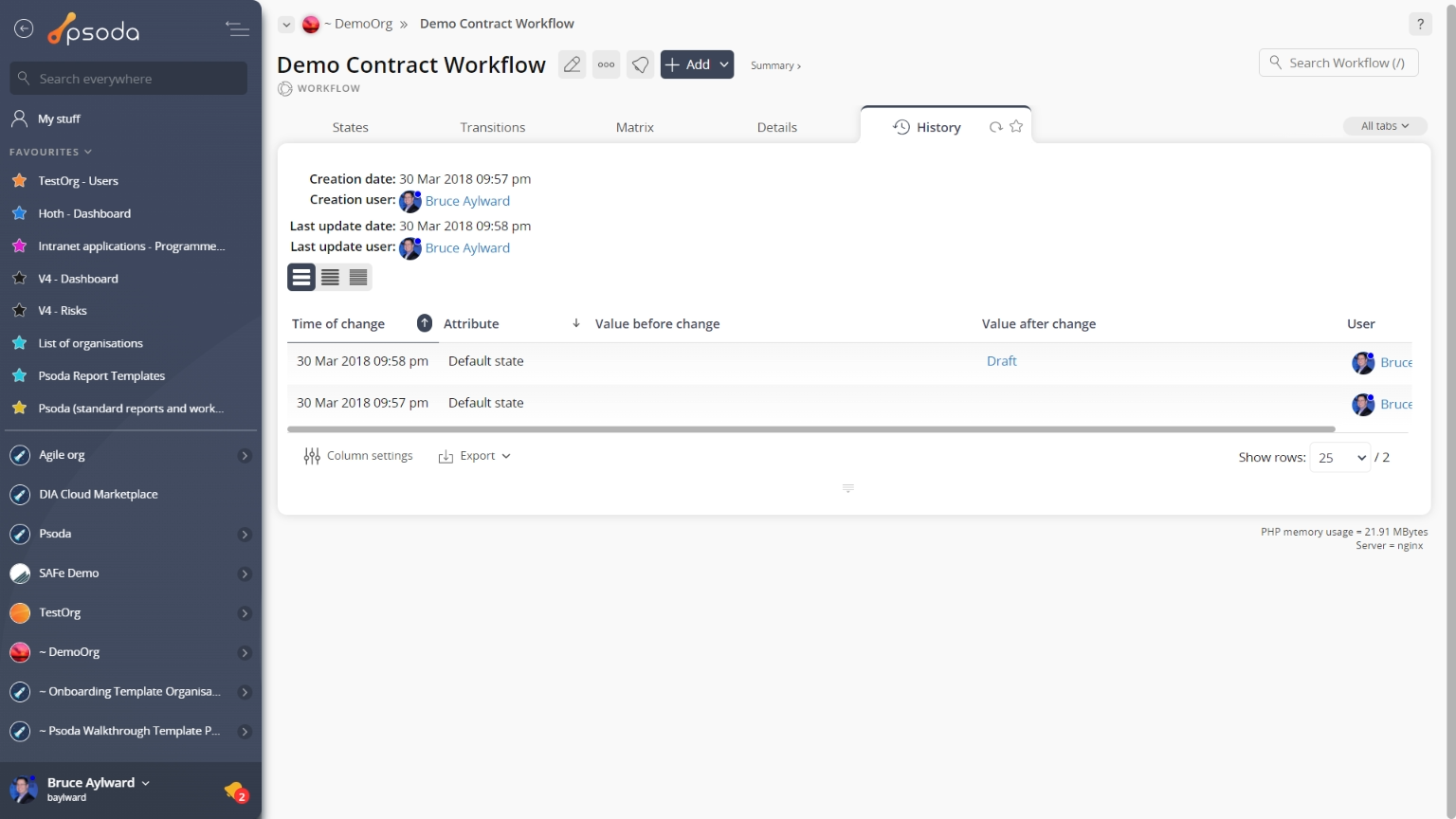
Figure 6 – Workflow history tab
Note that you can customise your change table view by clicking the edit button at the bottom of the change table. Here, you can also export this list of changes to
Excel or
CSV files.
 Matrix
Matrix
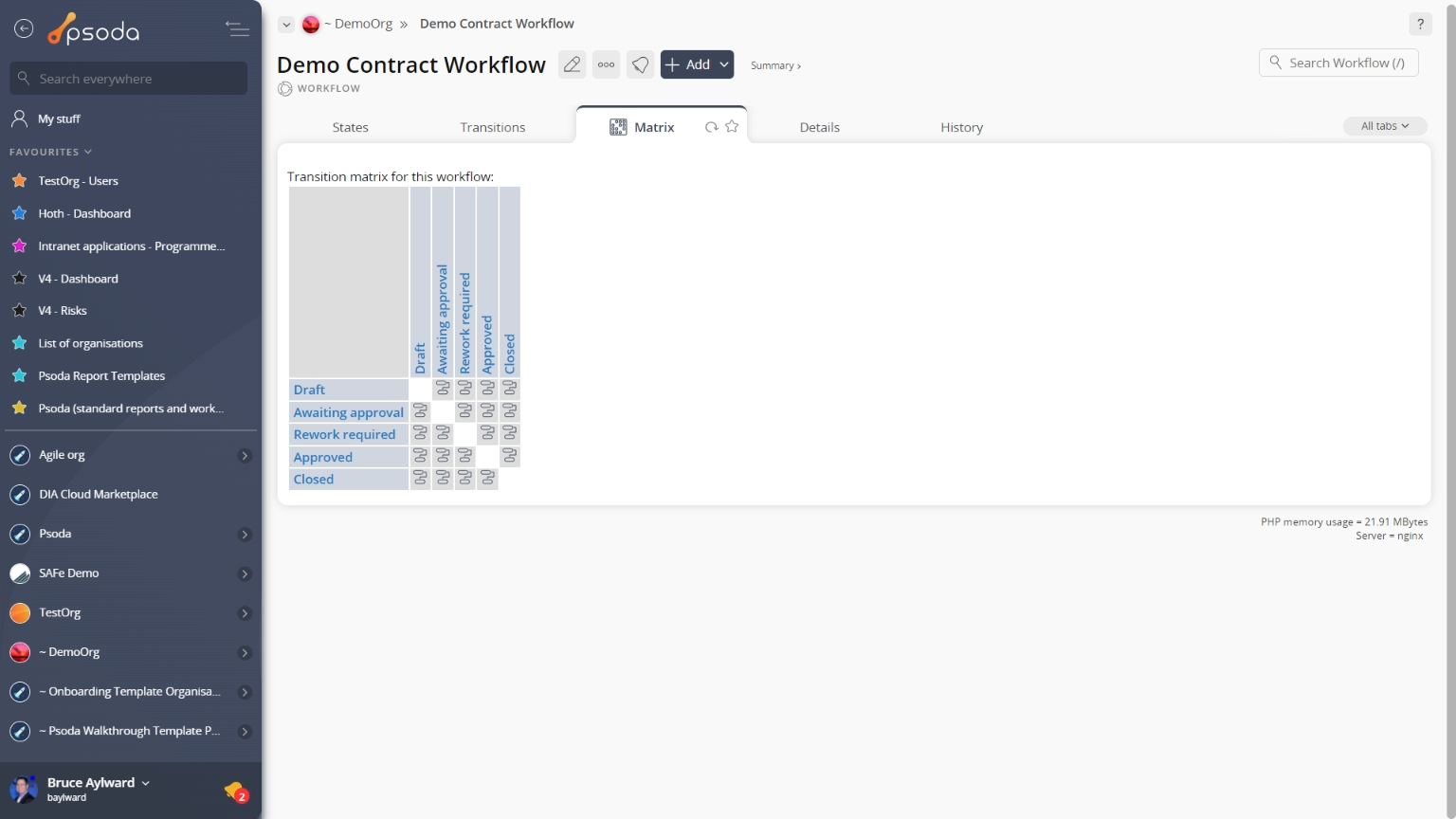
Figure 7 – Workflow matrix tab
This tab shows a transition matrix of all the states and transitions that are allowed for this workflow. States
States
This tab shows an asset listing of all of the workflow states that assets with this workflow can be in, as shown in Figure 8. By default, this table will present you with a number of details about the states such as the position, name, description, whether it has been archived and any users this workflow state has been allocated to. If you click on the link beneath the name column, you will navigate into the selected workflow state’s view page.
From the Actions column of this states table, you can act on individual states by 
Figure 8 – Workflow states tab
Note that you can customise your table view by clicking the edit button at the bottom of the states table or navigate to this same spot to
add more states to this workflow. Here, you can also export this list to
Excel or
CSV files.
 Transitions
Transitions
This tab shows an asset listing of all of the workflow transitions that are allowed for this workflow, as shown in Figure 9. By default, this table will present you with a number of details about the transitions such as the icon, name, description, from and to states and whether authorisation, votes and reasons are required. If you click on the link beneath the name column, you will navigate into the selected workflow transition’s view page.
From the Actions column of this transitions table, you can act on individual transitions by 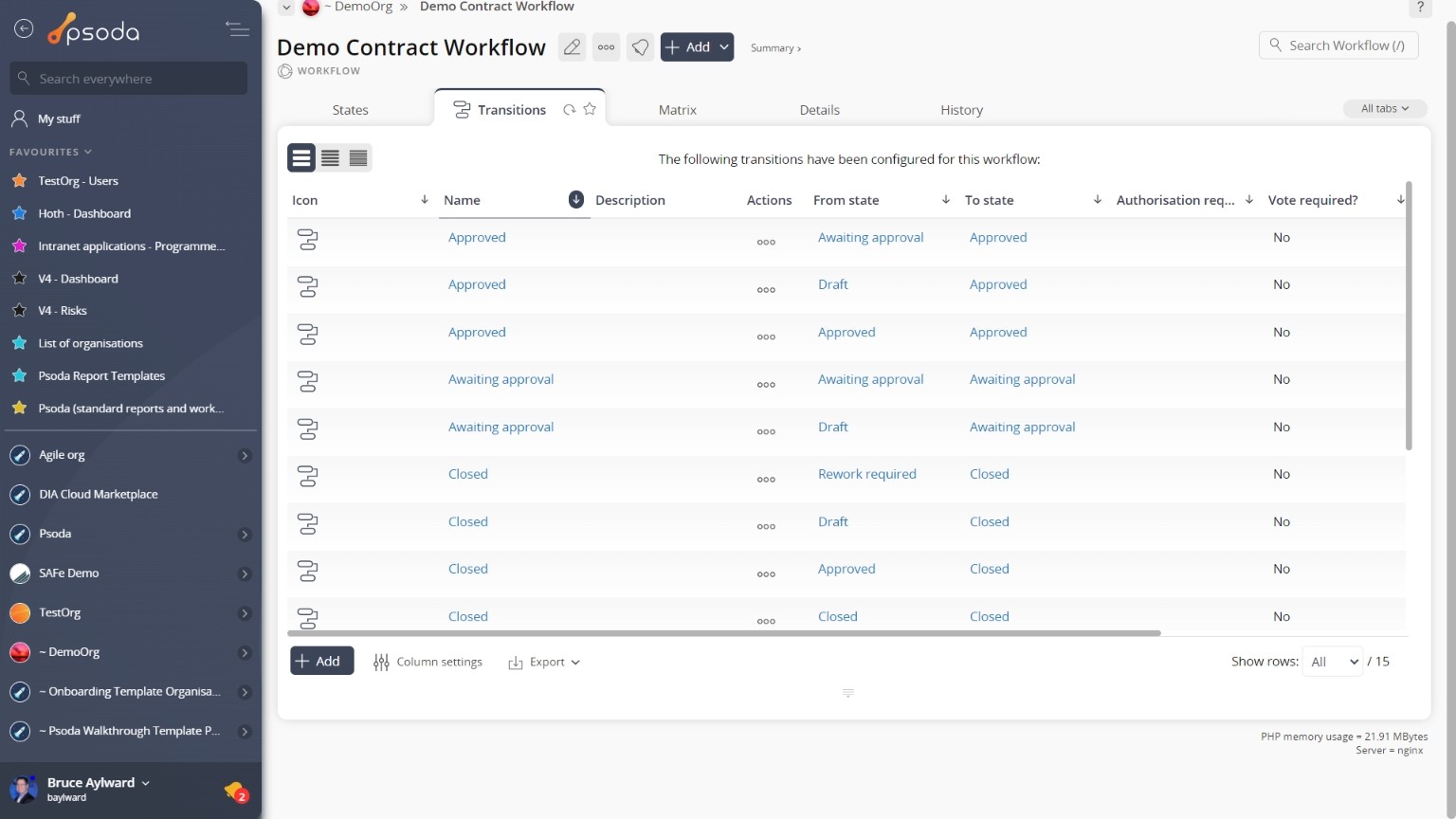
Figure 9 – Workflow transitions tab
Note that you can customise your table view by clicking the Visualise
Visualise
This tab provides an SVG visualisation of this workflow, so that you can see how the workflow can move from one state to another, as shown in Figure 10. This information is taken from the information in the states and transitions tabs.
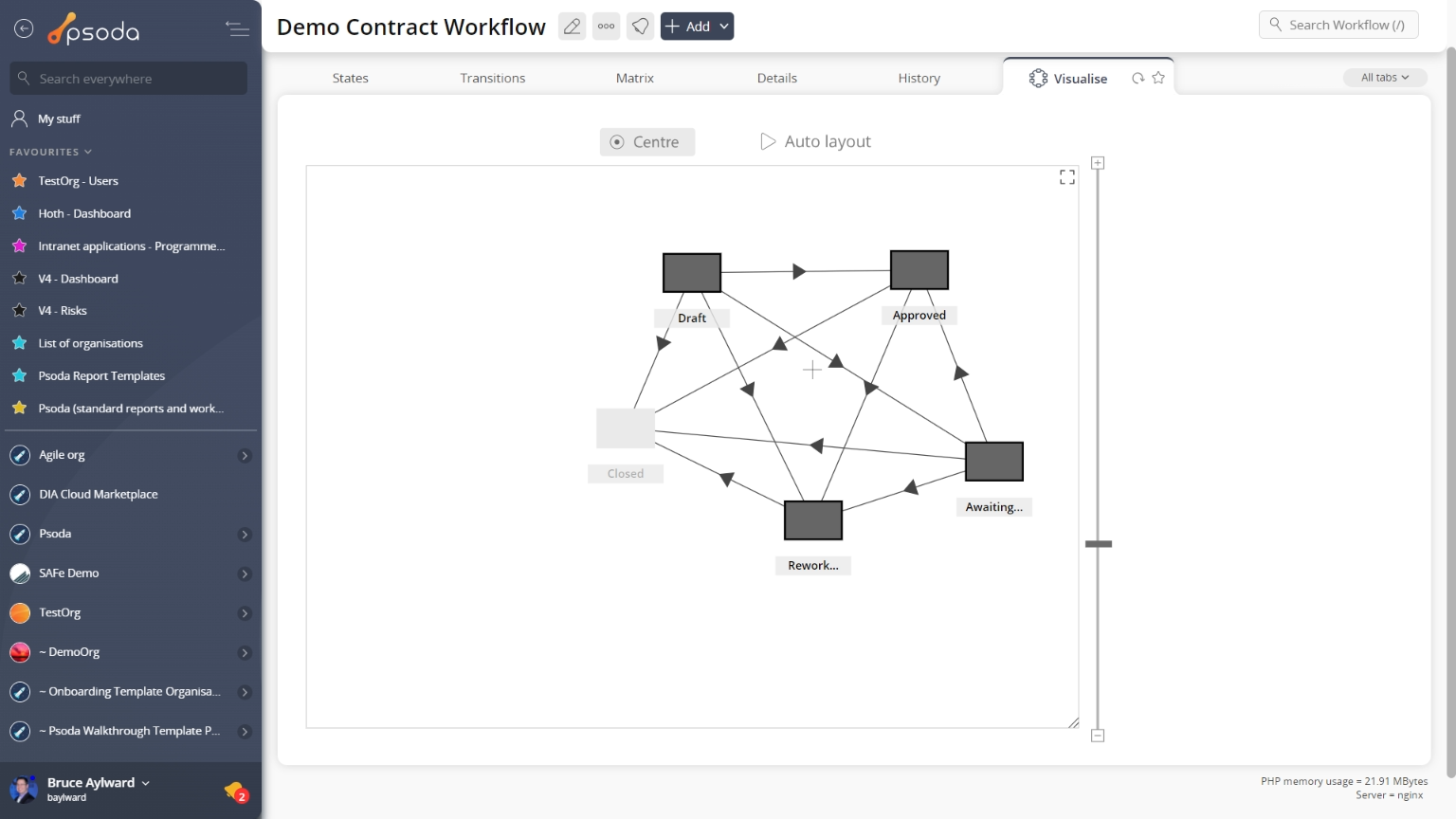
Figure 10 – Workflow visualise tab
This interactive map permits selection of states to be moved within this map by selecting, dragging and ‘dropping’ into a new position.